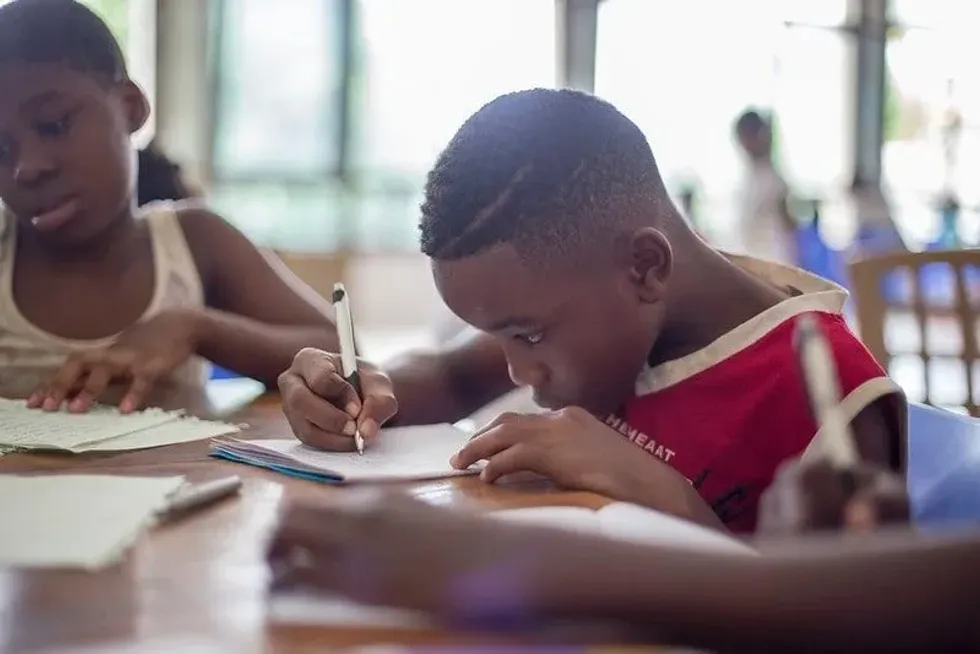As your kids progress into KS2 and their work becomes (let's face it) a bit more complex to teach, it's great to have a refresher of the topics we once learnt, even if we don't remember learning them.
Parents, carers, guardians, we've got you. Here's all you need to know about multi-clause sentences, to help you with teaching and helping your child from Year 2 to Year 6 get to grips with them, start using them, and excel in their writing!
Top Tip: Multi-clause sentences are one of a number of KS2 topics which our kids can often require additional help with. Why not add to their learning with our other resources on nouns, modal verbs, imperative verbs and letter writing skills?

What Is A Clause?
There are two types of clauses that KS2 pupils need to know about: the main clause and the subordinate clause.
Clauses are a bunch words put together, containing a subject (a thing or person that's being talked about, such as 'the table' or 'the lady') and a verb (a word that describes doing, for example 'jumped' or 'walked' or 'danced').
When teaching to kids, let them know that you need a subject and a verb to have a clause.
In other words, you need a person or thing, and a doing word to have a clause. This is different to a phrase, because phrases don't necessarily have verbs in them.
For example: 'The little girl' is a phrase, while 'the little girl ran' is a clause, because it has the verb 'ran'. The subject in both sentences is 'the little girl' because she is the one being talked about. A clause with one subject and one verb is called a simple sentence.
What Is An Example Of A Clause?
Here are some examples of clauses:
'I went' (subject is 'I' and verb is 'went').
'He danced' (subject is 'he' and verb is 'danced).
'She ran' (subject is 'she' and verb is 'ran').
They are also all simple sentences, as each only has one subject and one verb.

What Is A Main Clause?
A main clause is a clause (group of words with a subject and verb in) that contains a subject and an object. In other words, a clause with an object in it as well.
What is an object?
An object is a person or thing being talked about in a clause, like a subject, but it's not doing anything. Instead, something is being done to it.
For example:
Remember our clause 'the little girl ran'? 'The little girl' was our subject and 'ran' was our verb.
To turn this into a main clause, we'll need an object - another person or thing that won't be doing anything. Such as this:
'The little girl ran to her Mummy'.
We have two people in this clause ('the little girl' and 'Mummy'), but only 'the little girl' is doing something (she's running) so 'the little girl' is our subject, meaning 'Mummy' must be our object (not literally, Mums!). And the verb is still ran'.

What Is A Compound Sentence?
If you take two main clauses and put them together, with a connective in the middle, you get a compound sentence.
A connective is a word that joins clauses together, so that they can be in the same sentence. Words like 'and', 'but', 'though' and 'because' are all examples of connectives.
When teaching simple sentences and compound sentences, remember that:
Main clause + connective + main clause = compound sentence.
One main clause = simple sentence.
For example:
'I like cakes.' is a simple sentence because it has one main clause (the subject is 'I', the object is 'cakes' and the verb is 'like').
'I like cakes and I like cookies.' is a compound sentence as we have two main clauses, joined by a connective ('I like cakes' is the first, and 'I like cookies' is the second, with the connective being 'and').
What Is A Subordinate Clause?
A subordinate clause is a clause (group of words with a subject and a verb) which depends on a main clause, that's already been mentioned in the sentence.
In teaching, subordinate clauses are also known as dependent clauses, because they depend on the main clause.
Because subordinate clauses depend on a main clause, you'll find them in multi-clause sentences.
While main clauses can be sentences on their own, subordinate clauses cannot - there must be a main clause with it.

What Is A Multi-Clause Sentence?
A multi-clause sentence is one which has more than one clause in it. One is a main clause and at least one other is a subordinate clause.
In teaching, multi-clause sentences are also known as complex sentences.
For example:
'The little girl ran to her Mummy, because the dog was there' is a multi-clause sentence ( the main clause is 'the little girl ran to her Mummy', and the subordinate clause is 'because the dog was there').
'The dog barked, which made Rex jump'.
'Tomi, who sleeps a lot, is very tall'.
The last one is a special embedded clause, as the subordinate clause is in the middle of the main clause.
When Do Children Start Learning About Clauses?
In Year 1: Teaching and learning about clauses and clause sentences starts in Year 1. Children start writing sentences with two clauses, connected by 'and'.
In Year 2: Children learn about main clauses and subordinate clauses, and begin to use them to form complex sentences, with connectives such as 'because', 'when', 'that' and 'if'.
In Year 3: Children begin to use simple, compound and multi-clause sentences (complex sentences).
In Year 4: Children begin to use simple, compound and multi-clause sentences, with increasing sophistication in the range of new connectives used.
In Year 5: Children begin to use simple, compound and multi-clause sentences, with increasing sophistication in the range of new connectives used.
In Year 6: Children begin to use simple, compound and multi-clause sentences, with increasing sophistication in the range of new connectives used, such as 'therefore' and 'although'. They also need to grasp all of the following terms: 'clause', 'simple sentence', 'connective', 'main clause', 'subordinate clause', 'compound sentence', 'complex sentence', and 'multi-clause sentence'.












